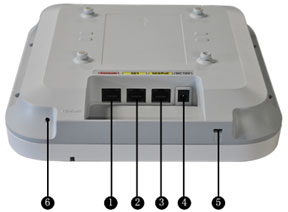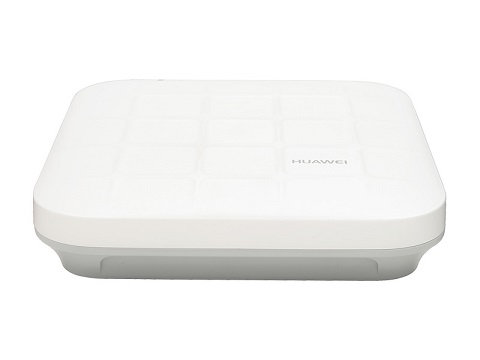Huawei AP7030DE Access Point
-
Model:
Huawei AP7030DE Access Point -
Detail:
Huawei AP7030DE dual-band AP provides secure gigabit wireless access in compliance with 802.11ac standards. -
Price:
$365.00
- Free Technical Support
- Product Quality Protection
- On-time Shipment
- +86 755 8215 3862
- leo@uonel.com
- ywx39894

1. Ground point: Connects to a grounding cable
2. GE1/PoE: 10M/100M/1,000M interface that connects to the wired Ethernet and supports the PoE power supply
3. GE0/PoE: 10M/100M/1,000M interface that connects to the wired Ethernet and supports the PoE power supply
4. Power input: 12V DC
5. Security slot: Connects to a security lock and protects against theft
6. Default button: Restores factory settings if you hold down the button more than three seconds
| Information type | Color | Status | Description |
|---|---|---|---|
| Default Status after Power-on | Green | Steady on |
AP is powered on and software has not started |
| Software Startup Status | Green | Steady on after blinking once |
After the system is reset and starts uploading the software, indicator blinks green once. Indicator remains steady green until software is uploaded and started |
| Running Status | Green | Blinking once every2 second (0.5 Hz) |
|
| Blinking once every5 second (0.2 Hz) | The system is running properly, the Ethernet connection is normal, and no STA is associated with the AP. The system is in low power consumption state (no data is being transmitted and the EEE function takes effect) | ||
| Alarm | Green | Blinking once every 0.25 seconds (4 Hz) |
|
| Fault | Red | Steady on |
A fault that affects services has occurred. The fault cannot be automatically rectified and must be rectified manually (the fault can be a DRAM detection failure or system software loading failure) |
| Blinking once every 0.25 seconds (4 Hz) |
A fault that affects services has occurred. The fault cannot be automatically rectified and must be rectified manually (the fault can be an Ethernet interface error, such as a PHY error, or a radio interface detection failure caused by a PCI-e interface error or baseband chip error) |







